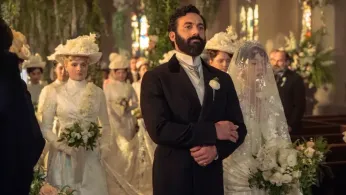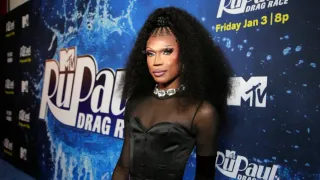
5 hours ago
‘The Gilded Age’ Sets Ratings Record With Season 3 Wedding Episode
READ TIME: 3 MIN.
HBO’s lavish period drama The Gilded Age just pulled off its biggest stunt yet—and no, it wasn’t another lavish ball or a catty exchange over caviar. Season 3, Episode 4, titled “Marriage Is a Gamble,” shattered the show’s own viewership records, drawing 3.8 million U.S. viewers in its first three days. That’s a 20% spike over last season, according to internal HBO data reported by TheWrap—and it makes this the most-watched episode in the series’ history.
At the heart of the episode? The long-awaited wedding of Gladys Russell, played by Taissa Farmiga, in all its gilded glory—and gut-wrenching complexity. While corsets and couture were on full display, what really gripped audiences was the emotional weight behind the spectacle. The storyline explored the tug-of-war between tradition and autonomy, with Gladys’s nuptials embodying the pressure-filled path so many women—and queer people—have walked for centuries.
Set in 1880s New York, The Gilded Age might drape itself in lace and luxury, but it doesn’t shy away from the grit beneath the glamour. In this episode, viewers watched Gladys navigate societal expectations, family ambitions, and looming scandal, all while quietly battling for control over her own fate. For many in the LGBTQ+ community, that struggle hit close to home.
The episode’s focus on “reluctant nuptials” and the cost of conformity sparked a wave of reflection online. Viewers saw Gladys’s storyline not just as historical fiction, but as a mirror—revealing just how little has changed when it comes to gender roles, identity, and self-determination. “The storyline resonated with fans for its nuanced exploration of autonomy and the pressures faced by women in the era, themes that continue to echo for many in the LGBTQ+ community.”
While the series hasn’t yet placed queer characters at the center, it’s circling themes that feel painfully familiar. “While The Gilded Age is set in 1880s New York, its examination of restrictive social norms and the quest for self-determination found fresh relevance among viewers from marginalized backgrounds.”
Creators Julian Fellowes and Sonja Warfield have faced growing calls to bring LGBTQ+ stories into the foreground. Thus far, queerness has existed only in subtext, but fans want more than hints. “While The Gilded Age has yet to fully center queer narratives, its focus on challenging oppressive structures and highlighting the personal costs of societal expectations resonates deeply with many LGBTQ+ viewers, who see echoes of their own experiences in the struggles of characters like Gladys.”
And oh, the internet noticed. Twitter lit up post-broadcast, with hashtags like #GildedAgeWedding and #QueerHistory taking flight. LGBTQ+ fans applauded the episode’s bold storytelling and the courage it took to portray emotional truths—if not queer ones—head-on. “Social media platforms lit up following the episode, with fans—particularly from LGBTQ+ communities—celebrating the show’s willingness to confront issues of autonomy, even if indirectly.”
Of course, some critics were quick to point out the gap: queer people existed in the Gilded Age—lavishly, tragically, and often invisibly. Their stories deserve more than whispers or coded longing. “Some critics and fans pointed out that, historically, queer individuals existed within the same Gilded Age social circles depicted in the series, often forced to navigate clandestine relationships or coded identities. The call for more direct inclusion of such stories continues to gain traction within the show’s vocal online community.”
Still, the breakout success of “Marriage Is a Gamble” shows that audiences want period dramas that do more than recreate the past—they want ones that interrogate it. For queer viewers especially, this episode represents not just a milestone in ratings, but a glimmer of possibility. “The success of ‘Marriage Is a Gamble’ not only sets a new bar for The Gilded Agebut also highlights the ongoing appetite for period dramas that challenge dominant historical narratives.”
And Hollywood is paying attention. Industry watchers suggest the show’s rising numbers could inspire HBO—and others—to finally invest in stories that reflect the full diversity of the audiences tuning in. “Industry analysts note that the show’s renewed viewership could encourage HBO and other networks to greenlight more inclusive storylines, reflecting the diversity of their audience.”
As The Gilded Age continues, the pressure’s on to move beyond allusions and bring the queer stories of the era into the spotlight. Because let’s be clear: we were always there.
“As The Gilded Age moves forward, fans and advocates alike will be watching to see if the series continues to evolve—bringing to light the often-hidden histories of queer individuals who shaped, and were shaped by, this transformative era.”






